Mild laceration. Laceration First Aid: Expert Guide to Treating Cuts and Wounds
What are the signs of a laceration that requires medical attention. How can you provide proper first aid for minor cuts at home. When should you seek professional treatment for lacerations. What are the steps for cleaning and bandaging a wound properly.
Understanding Lacerations: Types and Severity
A laceration is a type of wound where the skin and underlying tissues are torn or cut. Lacerations can range from minor scrapes to deep, bleeding cuts. The severity of a laceration depends on its depth, location, and the amount of bleeding involved.
There are several types of lacerations:
- Superficial lacerations: These affect only the outer layer of skin
- Deep lacerations: These extend into the deeper layers of tissue, potentially affecting muscles, tendons, or bones
- Complex lacerations: These involve multiple tissue layers and may have jagged edges
Understanding the type and severity of a laceration is crucial for determining the appropriate treatment approach.
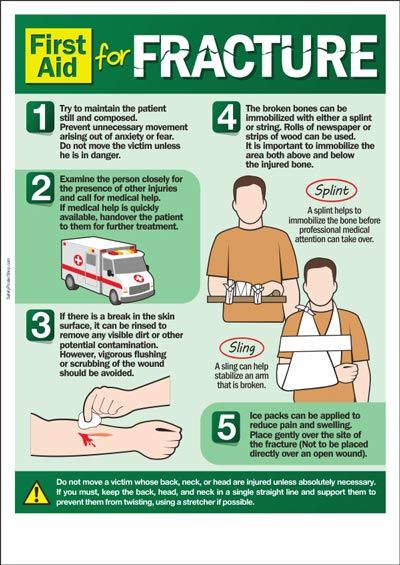
Immediate First Aid for Lacerations
When faced with a laceration, prompt and proper first aid is essential. Here are the immediate steps to take:
- Stop the bleeding: Apply firm, direct pressure to the wound using a clean cloth or sterile gauze
- Clean the wound: Rinse the area with cool water to remove dirt and debris
- Assess the severity: Determine if professional medical attention is needed
Is bleeding from a laceration ever beneficial? In small amounts, bleeding can help cleanse the wound of contaminants. However, excessive bleeding requires immediate medical attention.
When to Seek Emergency Medical Care
Certain laceration situations warrant immediate emergency care. Call 911 or seek immediate medical attention if:
- The cut is bleeding severely and cannot be controlled
- Blood is spurting from the wound
- Bleeding continues after 10 minutes of firm, steady pressure
- The wound is deep, wide, or has jagged edges
- You can see fat, muscle, or bone in the wound
- The injury is from an animal or human bite
- The wound is on the face or over a joint
Prompt professional care in these situations can prevent complications and ensure proper healing.

Home Treatment for Minor Lacerations
For minor lacerations that don’t require emergency care, proper home treatment is crucial. Follow these steps:
- Clean the wound thoroughly with mild soap and warm water
- Apply an antibiotic ointment to prevent infection
- Cover the wound with a sterile gauze bandage
- Change the bandage daily and keep the area clean
- Monitor the wound for signs of infection
How long should you keep a minor laceration bandaged? For most minor cuts, remove the bandage after a couple of days to promote air circulation and faster healing. However, if the wound is in an area prone to dirt or friction, you may need to keep it covered longer.
Professional Treatment Options for Lacerations
When a laceration requires professional care, several treatment options are available:
- Stitches (sutures): Used for deep or wide cuts to promote faster healing and reduce scarring
- Staples: An alternative to stitches, often used for scalp lacerations
- Skin adhesives: Medical glue used for smaller, clean cuts
- Steri-strips: Adhesive strips used to close small wounds
The choice of treatment depends on the laceration’s location, depth, and characteristics. A healthcare professional will assess the wound and determine the most appropriate method.
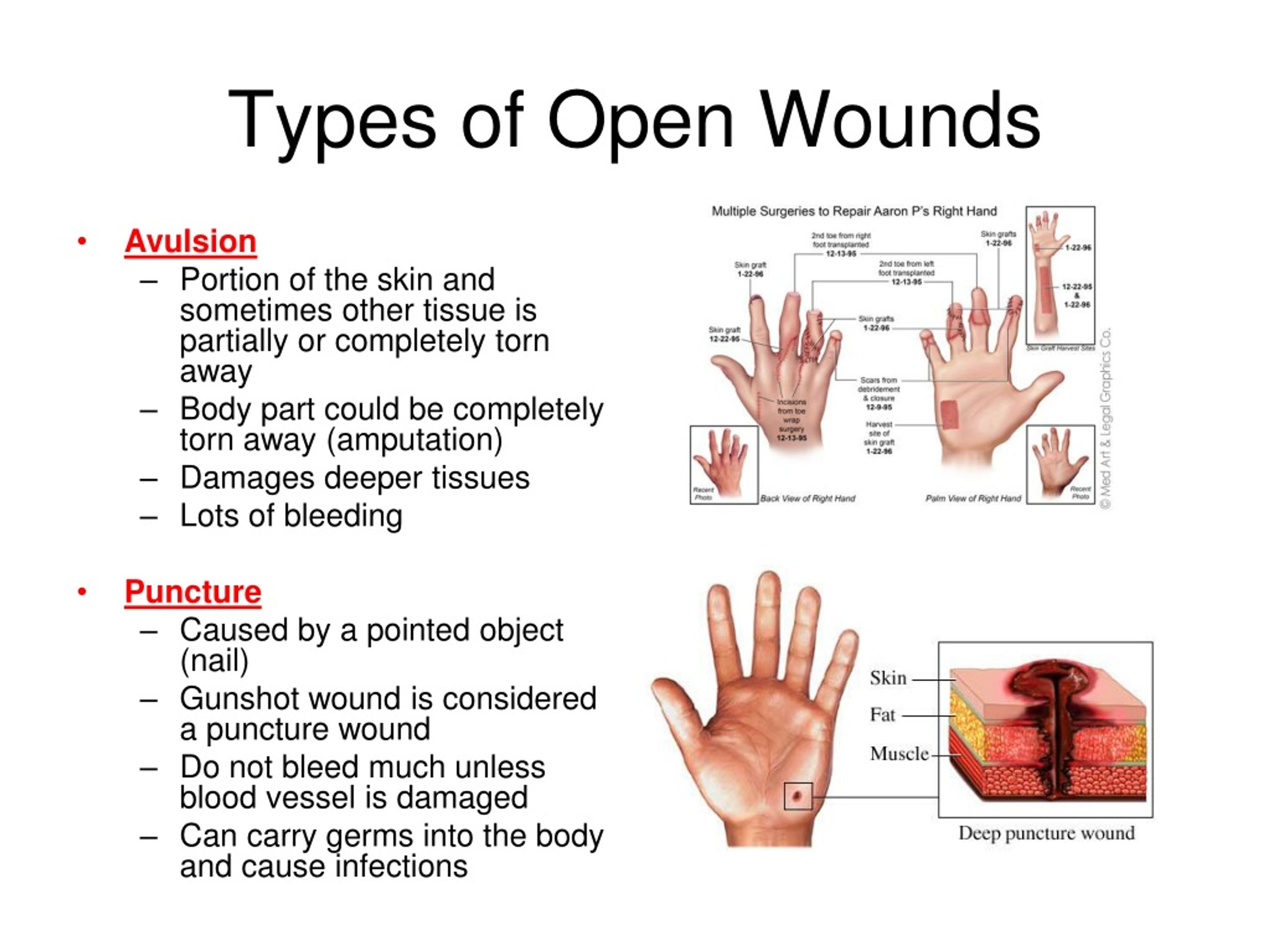
Timeframe for Professional Treatment
Timing is crucial when seeking professional treatment for lacerations. Most cuts needing stitches should be repaired within 6 hours of the injury. However, facial and scalp lacerations can often be treated up to 24 hours after the incident, unless they involve deep scrapes that have ground dirt into the skin.
Preventing Infection in Lacerations
Infection is a significant concern with lacerations. To minimize the risk of infection:
- Clean the wound thoroughly and keep it clean
- Use antibiotic ointment as directed
- Keep the wound covered with a clean, dry bandage
- Change the bandage regularly
- Avoid touching or picking at the wound
What are the signs of an infected laceration? Watch for increased redness, swelling, warmth, pain, or the presence of pus. If you notice these symptoms, seek medical attention promptly.
Special Considerations for Different Types of Lacerations
Different types of lacerations may require specific considerations:
Puncture Wounds
Puncture wounds, such as those from nails or animal bites, carry a high risk of infection. These wounds often require professional evaluation to ensure proper cleaning and to assess the need for tetanus or rabies prophylaxis.

Facial Lacerations
Cuts on the face require special attention due to cosmetic concerns. Prompt treatment by a healthcare professional can help minimize scarring and ensure proper healing.
Lacerations Over Joints
Cuts over joints may affect underlying structures and require careful evaluation to ensure proper function is maintained during healing.
Long-Term Care and Scar Management
After a laceration heals, proper care can help minimize scarring:
- Keep the healed wound protected from sun exposure
- Use silicone-based scar treatments as recommended by a healthcare provider
- Massage the scar gently to promote blood flow and reduce scar tissue formation
- Consider professional scar revision treatments for significant scars
How long does it take for a laceration scar to fade? The appearance of scars typically improves over time, with significant fading occurring within the first year. However, complete fading may take several years, and some scars may never disappear entirely.
When to Worry About a Healing Laceration
While most lacerations heal without complications, it’s important to be aware of potential issues. Seek medical attention if you notice:
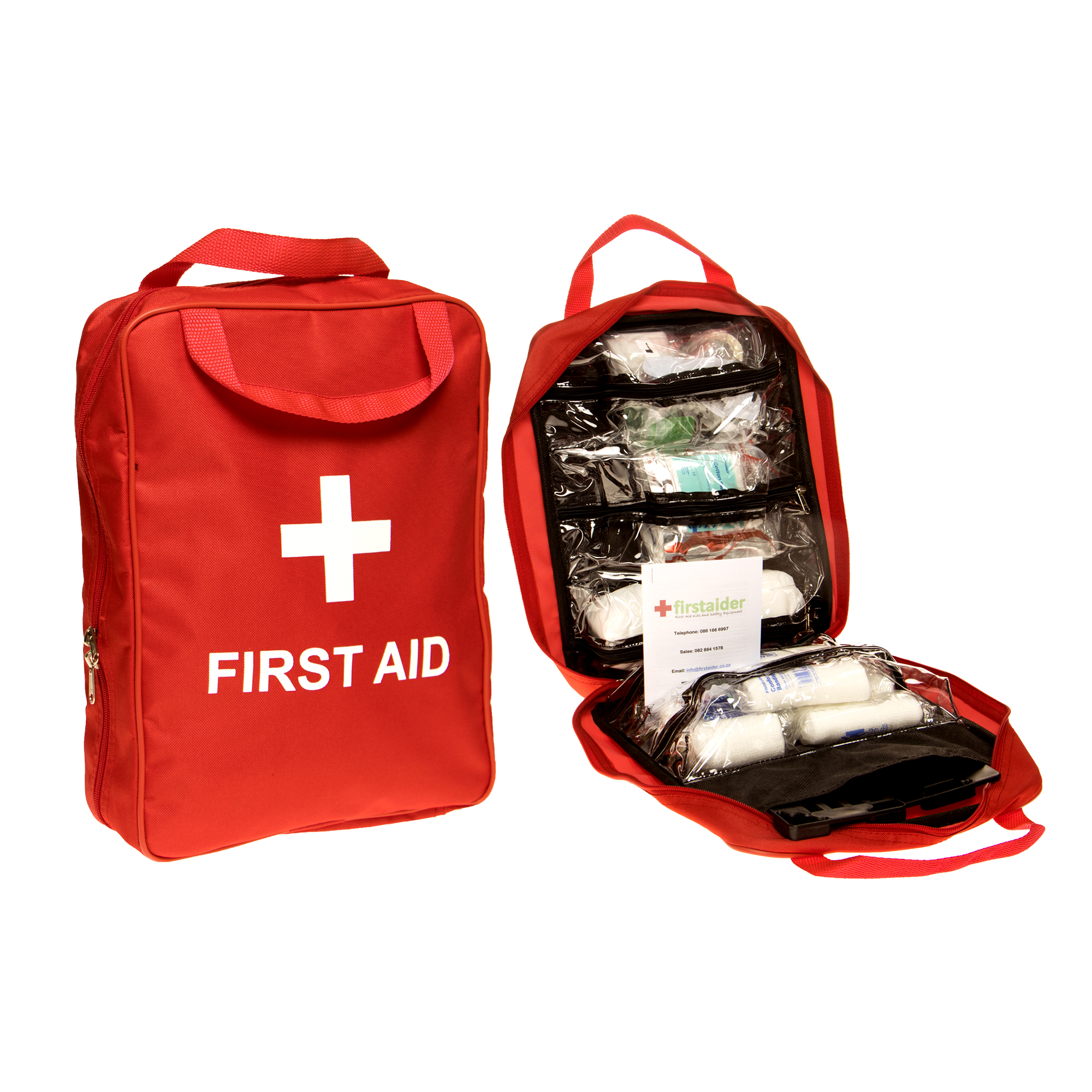
- Increased pain or tenderness after the first day
- Redness spreading beyond the wound edges
- Fever or chills
- Foul-smelling discharge
- The wound reopening or failing to close
- Numbness or loss of function in the affected area
These symptoms could indicate infection or other complications that require prompt medical evaluation.
Tetanus Prevention and Lacerations
Tetanus is a serious concern with certain types of wounds, including deep or dirty lacerations. Ensure your tetanus vaccination is up to date, especially if your wound is contaminated with dirt, rust, or saliva.
When was your last tetanus shot? If it’s been more than 5 years since your last tetanus booster and you have a dirty or deep wound, consult a healthcare provider about getting a booster shot.
Laceration First Aid Kits: Essential Supplies
Having a well-stocked first aid kit can help you manage lacerations effectively. Essential items include:
- Sterile gauze pads and adhesive bandages
- Antiseptic wipes or solution
- Antibiotic ointment
- Clean cloth or towels
- Scissors and tweezers
- Medical tape
- Disposable gloves
Regularly check your first aid kit to ensure supplies are not expired and replenish as needed.
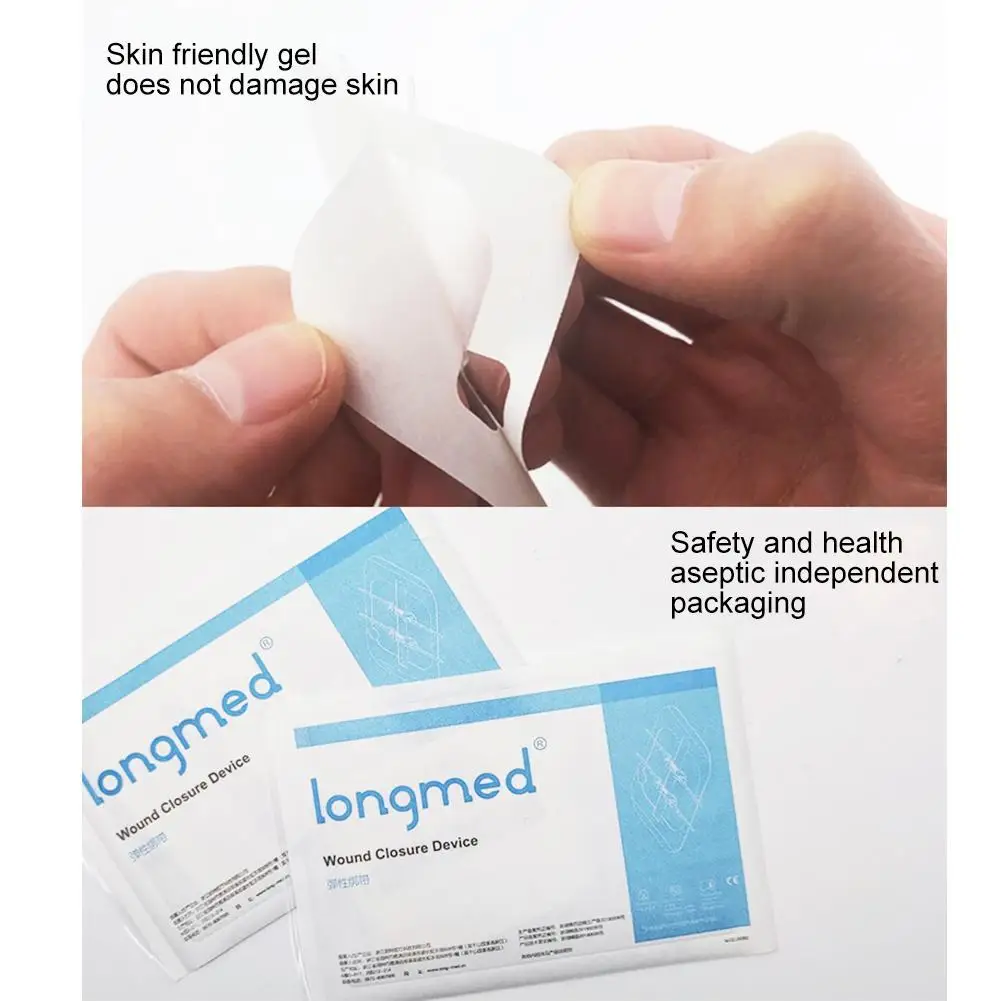
Laceration Prevention Strategies
While accidents happen, many lacerations can be prevented with proper precautions:
- Wear appropriate protective gear during sports and outdoor activities
- Use caution with sharp objects and power tools
- Keep walkways clear of hazards
- Wear shoes to protect feet from cuts and punctures
- Use proper lighting when working with tools or in potentially hazardous areas
By implementing these strategies, you can significantly reduce your risk of sustaining lacerations during daily activities and recreational pursuits.
Educating Children About Laceration Safety
Teaching children about laceration safety is crucial for preventing injuries. Key points to cover include:
- The importance of using tools and equipment safely
- How to recognize potential hazards
- Basic first aid for minor cuts
- When to seek adult help for injuries
Encourage open communication about injuries and emphasize the importance of promptly reporting any cuts or wounds to a responsible adult.
Lacerations in Special Populations
Certain groups may require special consideration when it comes to laceration care:
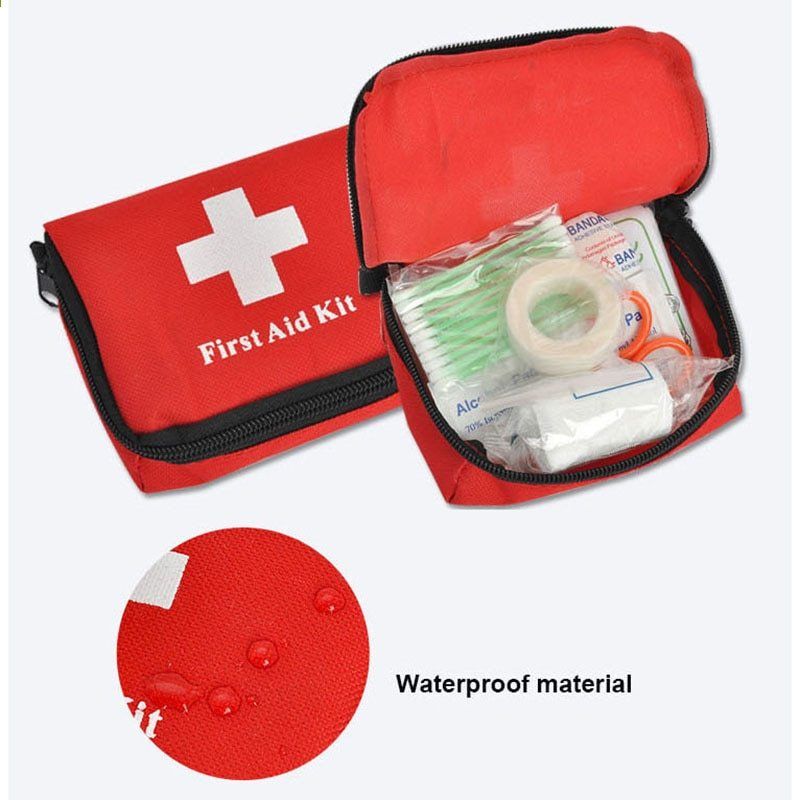
Elderly Individuals
Older adults may have thinner skin and slower healing processes, requiring extra care and vigilance in wound management.
People with Diabetes
Diabetic individuals often have compromised wound healing and are at higher risk for infections. Even minor lacerations should be monitored closely and may require professional care.
Individuals with Bleeding Disorders
People with conditions that affect blood clotting may need specialized care for lacerations to manage bleeding and ensure proper healing.
Psychological Aspects of Laceration Care
The psychological impact of lacerations, especially those resulting in visible scars, should not be overlooked:
- Provide emotional support and reassurance during the healing process
- Discuss concerns about scarring openly and honestly
- Consider professional counseling if a laceration leads to significant distress or anxiety
Addressing both the physical and emotional aspects of laceration care can contribute to overall well-being and faster recovery.

Innovative Treatments in Laceration Care
Advancements in medical technology have introduced new options for laceration treatment:
- Advanced wound dressings that promote faster healing
- Negative pressure wound therapy for complex lacerations
- Platelet-rich plasma treatments to accelerate healing
- Laser therapy for scar reduction
While these treatments may not be necessary for all lacerations, they offer promising options for challenging cases or when optimal cosmetic outcomes are desired.
Understanding the nuances of laceration care, from basic first aid to advanced treatment options, empowers individuals to respond effectively to injuries and promote optimal healing. By following proper care guidelines and seeking professional help when needed, most lacerations can be managed successfully, minimizing complications and ensuring the best possible outcomes.
Basic First Aid and Professional Treatment
Skip to content
Previous Next
At M.D. Express Urgent Care, we hope you are enjoying a safe and carefree spring. We want you to be familiar with the symptoms of minor and more serious lacerations and first-aid treatments for them. As seasons change, more people are outside, hiking or swimming, and going barefoot. The chance for a laceration increases with these activities.
What Is a Laceration?
A laceration can be anything from a small, minor scrape to a deep, bleeding cut. In a laceration, none of the skin is missing; it’s just separated. While some lacerations can seem minor, they may become serious if not treated properly and promptly.
First Aid for Lacerations
You should call 911 immediately if:
- A cut is bleeding severely.
- Blood is spurting out.
- Bleeding can’t be stopped after 10 minutes of firm and steady pressure.
At Home Treatment of Lacerations
Standard first aid for lacerations (irregular, jagged cuts) should focus on thorough cleaning after stopping the bleeding, because lacerations tend to be contaminated with bacteria and debris from the object that caused the cut.
- Stop the flow of blood by applying firm pressure to the laceration with a clean cloth or gauze. A small amount of blood is advantageous in cleansing the wound, but large amounts of blood loss can be dangerous.
- Properly clean the wound. Remove all dirt and debris by first running cool water over the area, and then clean with a sterile cloth, warm water, and mild soap.
- Apply antibiotic ointment, and then cover the wound area with a sterile gauze bandage and first-aid tape.
- Clean the wound area daily with soap and water and apply a fresh sterile bandage.
- For a minor laceration, remove the bandage after a couple of days to promote healing.
Professional Treatment of Lacerations
Deep or wide lacerations generally require medical assistance, as they probably will require stitches or staples. Stitching and stapling both:
- Promote faster healing.
- Help keep bacteria out of the wound.
- Reduce the chance of infection.

- Prevent unsightly scarring.
A cut needing stitches should be repaired within six hours of the injury. Cuts to the face and scalp can be repaired up to 24 hours after the injury; unless they are deep scrapes, which grind dirt into the skin.
In general, if a laceration is caused by gravel or penetrating glass or metal, an x-ray is a good idea to make sure no fragments remain within the wound. Fragments can cause permanent damage to skin and greatly increase infection risk.
If you suspect infection in a laceration, you’ll need to get medical attention immediately. Signs of infection include:
- Redness
- Swelling
- Draining pus.
- Increased pain or tenderness a day or more after the injury.
A medical professional will clean the wound and administer a tetanus or booster shot. In some cases, a doctor will prescribe an oral antibiotic.
You should seek medical attention if:
- The wound is on your face.
- The area feels numb — sometimes nerve injuries cause weakness, paralysis, or loss of sensation.

- The wound is deep or jagged.
- You can see fat, muscle, or bone; or suspect the laceration is over a joint.
- The laceration (or puncture wound) is caused by an animal or human bite.
- You have not had a tetanus shot in the past 5 to 10 years.
Lacerations are part of life. But when you have a more serious laceration you suspect either needs to be closed or cleaned professionally, our highly trained physicians and nurses at M.D. Express Urgent Care will provide expert care. We are here when you need us! Come see us at M.D. Express, where The Doctor is Always in!
Categories
- Awards
- Blog
- Health Tips
- Illnesses
- Injuries
Recent Posts
- Vital Signs: Respiratory Rate, Temperature and Oxygen Saturation
- Vital signs: Blood Pressure and Heart Rate
- Vital Signs: Introduction
- The ABCs of Skin Cancer
- Why Employee Medical Exams Matter
Page load link
Go to Top
Laceration Repair | UVA Health
If you have a tear or cut in your skin, tissue and/or muscle, you may need laceration repair, which includes cleaning, preparing and closing the wound.
When Do You Need Laceration Repair?
If your cut looks shallow, small, clean and isn’t bleeding, you may not need medical care. Antibiotic ointment and a bandage will be enough.
Wounds that may need medical repair have:
- Exposed muscle, fat, tendon or bone
- Dirt and debris in the wound, even after cleaning
- Feeling as if something is in the wound
- Bleeding continues after applying direct pressure for 10-15 minutes
- Jagged or uneven edges
- Depth more than 1/8 to 1/4 inch deep
- Location on area of high stress (joints, hands, feet, chest)
- Possible intense scarring
Not Sure? Visit the hospital.
How to Treat Your Cut at Home
To treat the laceration before you see the doctor:
- Apply direct pressure to the wound. Use gauze, a clean cloth, plastic bags, or, as a last resort, a clean hand. If your wound bleeds through the gauze or cloth, do not remove it.
 Add more gauze.
Add more gauze. - If possible, elevate the wound above the heart. This will make it harder for blood to flow to the wound.
- Do not tie a tourniquet around an affected limb. This may cause more damage.
- If bleeding stops, let some water run over the wound. Tap water is safe to use.
- If muscle, tendon, bone, or organs are exposed, do not try to push them back into place.
- If you are feeling faint, lie down or sit with your head between your knees.
Laceration Repair: Treatment Options
At UVA Health, we offer the following methods to repair your wound.
Dermabond
This special glue holds a wound together. We can use Dermabond on your face, arms, legs and torso, but not for lacerations over joints, lisp, deep cuts or most hand and foot lacerations.
How Dermabond Works
We hold the cut shut for 60 seconds, while we apply three thin layers of Dermabond over the area. You may feel warmth as the glue sets. A bandage may be placed over the area over the wound.
A bandage may be placed over the area over the wound.
- Dermabond will fall off in 5-10 days.
Do Not Try Glue At Home: This special glue sits on top of the laceration, not in it. Never try to repair a wound at home with regular glue; getting glue into wounds may prevent them from healing properly.
Steristrips
We can use these adhesive strips to close wounds that are clean, shallow, have straight edges and are easy to push closed.
- Steristrips will typically be removed after 5-10 days or fall off on their own.
Stitches
We use stitches for deep, bleeding wounds with jagged edges or exposed fat or muscle.
Getting Stitches
First, we clean the cut with iodine and cover the area with a surgical drape.
Then, if necessary, we sew stitches under the skin. Your body will absorb these; we won’t need to remove them.
We will then stitch the wound shut, clean it with saline, apply antiseptic and cover with gauze or a bandage.
- Stitches will be removed after 5-14 days.
Staples
Staples work best for the scalp, neck, arms, legs, torso and buttocks. We clean your skin with iodine, close and align the wound, then staple the wound shut.
We will then wash the staples with saline, pat them dry, apply antibiotic, a clear acrylic dressing called Tegaderm, gauze and tape.
- Staples will be removed after 5-10 days.
Hair Tying for Scalp Lacerations
Sometimes, we can gather hair to pull a wound on the scalp shut. We then rubber band or glue the hair with Dermabond to keep the wound closed while it heals.
- Rubber bands will be cut from hair in 7-10 days.
Preparing for Laceration Repair
Once you are at the hospital, the doctor will likely do the following:
- Examine the wound
- Decide if you need a surgeon
- Ask about your medical history, allergies and how the wound occurred
- Discuss your pain tolerance and options for closing the laceration
- Explain the chosen procedure
Will I Need Anesthesia?
This depends on the type of laceration, for example:
- Local anesthesia is used for minor lacerations.
 This will numb the area around the wound.
This will numb the area around the wound. - General anesthesia may be needed for severe lacerations. It will block pain and keeps you asleep.
In some cases, you will not need anesthesia.
What Are the Side Effects?
If you have a laceration repair, your doctor will review a list of possible complications, which may include:
- Infection
- Bleeding
- Noticeable scarring
- Poor wound closure
- Allergic reaction to anesthetic
The Risk of Tetanus
Wounds can put at risk of a tetanus infection, a bacterial infection from dirt, dust, saliva or feces.
We may give you a tetanus vaccination if:
- You have never received a total of at least three vaccination doses (routine childhood immunizations gives a dose at ages 2, 4, 6, and 15-18 months)
- It has been more than five years since your last tetanus immunization
- You are unsure of your tetanus status
Recovery After Laceration Repair
When you return home, ensure a smooth recovery:
- Avoid strenuous activities.

- Take antibiotics and pain medication as directed.
- Ask your doctor about when it is safe to shower, bathe or soak in water, and
- If you need to keep the incision area dry when showering, wrap the area with a plastic bag.
- After showering or bathing, pat the area dry. Do not rub the area. Also, do not apply hydrogen peroxide or iodine to the wound. This will damage tissue and slow healing.
- Do not pick at or scratch the wound.
- Do not try to remove the closure material yourself, as that could cause infection, scarring or reopening of the wound.
Scarring
All lacerations heal with scars. The degree of scarring varies and is influenced by:
- A personal history of excessive scar (keloids) formation
- Location, type and size of the wound
- Skill of the doctor
If a noticeable scar does result, plastic surgery may be used to decrease the scar’s appearance.
What to Watch With Your Wound
After arriving home, contact your doctor if any of the following occurs:
- Wound reopens
- Redness, warmth, swelling, drainage or excessive bleeding occurs at the wound site
- Signs of infection, including fever, chills or red streaks tracking up arm or leg
- Spasm or rigidity of muscles in jaw, neck, abdomen or an area near the wound
- Any other concerns
In case of an emergency, call for medical help right away.
Find a Doctor at UVA
Find a primary care provider near you.
Types of wounds. Wound healing process. Types of wound healing.
Wounds, types of wounds
Wound – violation of the integrity of the skin or mucous membranes.
Victims are injured in domestic conditions, industrial, combat and criminal conditions. In addition, wounds are inevitably inflicted during surgical interventions.
Types of wounds
Mechanical wounds according to the nature of damage and the type of traumatic agent are divided into:
- cut
- stab
- bruised
- thrashed
- torn
- chopped
- bitten
- gunshot.
According to the depth of penetration into the body of the victim, wounds are distinguished:
- superficial (damage to the skin and subcutaneous fatty tissue)
- deep (damage to subfascial spaces and muscles)
- penetrating into cavities and organs
According to the degree of contamination and the presence of signs of infection, all wounds are divided into:
- Aseptic – surgical wounds in “clean” surgical interventions;
- Contaminated – wounds contaminated with microflora, but without signs of suppuration.
 These include all accidental wounds after their application and part of surgical wounds
These include all accidental wounds after their application and part of surgical wounds - Infected – purulent wounds.
Wound healing process. Types of healing
Nature has provided a unique mechanism that allows the body to repair the damage caused by injury. Whether it is a small cut of the finger or a deep abrasion, a postoperative wound or an accidental injury, the wound healing process will immediately start, the purpose of which is to close the damage as quickly as possible. Sometimes this process is delayed or proceeds with complications, and then the experience of wound treatment accumulated by mankind over the millennia and supported by the knowledge and achievements of modern medicine comes to the rescue
Healing process
Currently, there are 3 phases of the course of the wound process:
- Inflammation phase — begins immediately after injury and, in the absence of complications, lasts an average of 4-5 days.
 It is characterized by typical vascular reactions – vasoconstriction (vasoconstriction), followed by vasodilation (vasodilatation), exudation with the release of plasma proteins, migration and release of blood cells into the damage zone, fibrin prolapse with delimitation of the damage zone, edema and infiltration of surrounding tissues.
It is characterized by typical vascular reactions – vasoconstriction (vasoconstriction), followed by vasodilation (vasodilatation), exudation with the release of plasma proteins, migration and release of blood cells into the damage zone, fibrin prolapse with delimitation of the damage zone, edema and infiltration of surrounding tissues. - The regeneration and proliferation phase lasts 2-4 weeks on average. Regeneration processes begin from the first day after injury, and their duration depends on the size of the wound defect. Collagen and ground substance are formed, new formation of blood vessels occurs with the development of granulation tissue at the site of the tissue defect.
- The phase of epithelialization and reorganization of the scar , depending on the morphology of the tissues, lasts from several weeks to a year. Epithelialization begins from the edges of the wound simultaneously with the formation of granulation tissue. Immediately after the formation of the scar, its restructuring begins, which is manifested by the formation of elastic fibers and the development of a new fibrous network, and the water content in the scar tissue decreases.

Types of healing
Healing by primary intention. This type of healing is typical of wounds with even viable edges, lagging behind each other by no more than 1 cm. This is healing without suppuration. It occurs with the formation of a linear scar without the formation of interstitial tissue. Surgical wounds with primary sutures usually heal by primary intention.
Healing by secondary intention. This is healing through suppuration and granulation with the development of a rough scar and the formation of visible interstitial tissue. Such healing occurs with extensive tissue defects that do not allow primary comparison with the wound wall and with the development of wound infection
Healing under the scab – healing without scar. With superficial wounds without damage to the germ layer of the skin.
Treatment of scratches and cuts – how to speed up healing
The skin is the largest and most vulnerable organ. It takes on all the impacts of the external environment. Nature created it gentle, but strong: wound healing is a natural process that is subject to the epidermis. How to help him at this difficult stage and speed up recovery?
It takes on all the impacts of the external environment. Nature created it gentle, but strong: wound healing is a natural process that is subject to the epidermis. How to help him at this difficult stage and speed up recovery?
About wounds
Any damage to the skin due to mechanical action is called a “wound”. Abrasions, scratches, stab, cut – wounds are different. Depending on this, the depth of the wound, its type, and methods of treatment are determined. Healing of small injuries occurs quickly, serious ones are more difficult and longer. To restore the skin, the body uses all internal resources, but this can be helped with the help of special wound healing products.
Types of wounds
There are more than 10 types of injuries. They can touch only the skin or penetrate deeper, affect the internal organs. As soon as a wound appears on the body, it must be treated. Seconds count: if an infection enters the bloodstream, it threatens the entire body. Stopping the blood and disinfecting is the first thing to do.
Types of wounds and methods of their treatment:
All types of wounds are subject to medical treatment from the first hours.
The complete wound closure process includes three stages:
- The inflammation phase. The blood carries the necessary enzymes and cellular factors to the wound. They contribute to the cleansing of foreign bodies and dead tissue, prevent infection. After 5-7 days, the inflammatory process is completed.
- Regeneration phase. New connective tissue (granulations) and blood vessels are born.
- Stage of scarring. During this period, the final scar tissue is formed, the skin is restored, the wound heals.
Rapid healing of wounds depends on how extensive the area of damage and its depth.
Restoration of the skin is carried out in different ways and depends on the loss of tissue, the edges of the wound, the presence of infection in it, foreign bodies. The following types of wound healing are distinguished:
- Under the scab.
 The fastest and easiest process. It concerns minor abrasions, scratches, injuries in which the deep layers of the skin are not affected. A crust forms at the site of the wound, it acts as a natural defense against infection. Under it, a rapid recovery of the epidermis occurs, then the crust disappears.
The fastest and easiest process. It concerns minor abrasions, scratches, injuries in which the deep layers of the skin are not affected. A crust forms at the site of the wound, it acts as a natural defense against infection. Under it, a rapid recovery of the epidermis occurs, then the crust disappears. - Healing by primary intention. Typical for cuts, surgical incisions. The edges of the wound are even, the tissues are alive, blood flows to them, and tissue loss is minimal. After recovery, a small scar forms on the skin.
- Healing through suppuration (secondary intention). The most difficult type of regeneration. It takes a long time, painfully and with risks of complications. The process is typical for lacerations, burns, for injuries with a large area. The healing of deep wounds may be accompanied by suppuration of varying degrees. At the end, a large scar is formed.
The first two types can be treated at home, healing by secondary intention requires medical supervision.
- Chronic diseases. For example, the respiratory and cardiovascular systems.
- Some treatments. Taking anti-inflammatory drugs, radiation therapy.
- Reduced immunity and diseases of the immune system. Patients with HIV status are at risk.
- Circulatory disorders in the body.
- Reduced body weight.
- Wound infection. A serious process that affects not only the damage itself, but also the general condition of the body. Causes fever, fever, requires antibiotics.
Shallow wounds heal faster if they are treated with special agents.
Acceleration of wound healing with Bepanthen® Plus
So, something bad happened, the skin was damaged. The wound bleeds, hurts and causes great discomfort. I want to get rid of the damage faster, a logical question arises: how to speed up the healing of superficial wounds?
Unfortunately, if the wound is deep, it is difficult to speed up its recovery. But in cases of small cuts, children’s torn knees, scratches after pets, the healing stage occurs faster if wound healing agents are used. The modern drug Bepanthen® is available in several forms:
The modern drug Bepanthen® is available in several forms:
- Ointment. Can be used to heal skin after scratches and light burns.
- Cream. Suitable even for weeping wounds.
- Bepanthen® Plus with antiseptic. Disinfects the wound.
The treatment of abrasions in children is also subject to Bepanthen® Plus, because most types of the drug are allowed even for infants from the first days of life. Contraindication is hypersensitivity to the components of the drug.
Bepanthen® Plus is applied to the lesion several times a day, depending on the size of the lesion and the doctor’s instructions. If necessary, you can apply bandages along with the cream. Thanks to its components, the agent acts in two directions:
- Dexpanthenol. The active ingredient in Bepanthen® plus. Provitamin B 5 penetrates deep into the epidermis, activates its cells for recovery, starts the process of skin regeneration from the inside.
- Chlorhexidine.



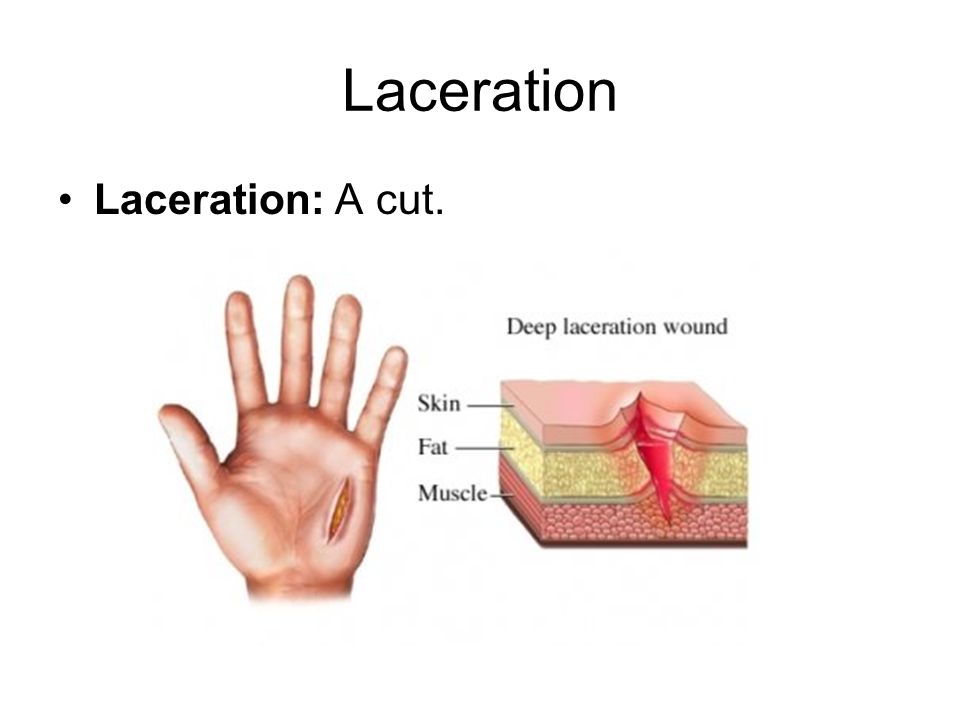
 Add more gauze.
Add more gauze. This will numb the area around the wound.
This will numb the area around the wound.
 These include all accidental wounds after their application and part of surgical wounds
These include all accidental wounds after their application and part of surgical wounds It is characterized by typical vascular reactions – vasoconstriction (vasoconstriction), followed by vasodilation (vasodilatation), exudation with the release of plasma proteins, migration and release of blood cells into the damage zone, fibrin prolapse with delimitation of the damage zone, edema and infiltration of surrounding tissues.
It is characterized by typical vascular reactions – vasoconstriction (vasoconstriction), followed by vasodilation (vasodilatation), exudation with the release of plasma proteins, migration and release of blood cells into the damage zone, fibrin prolapse with delimitation of the damage zone, edema and infiltration of surrounding tissues.
 The fastest and easiest process. It concerns minor abrasions, scratches, injuries in which the deep layers of the skin are not affected. A crust forms at the site of the wound, it acts as a natural defense against infection. Under it, a rapid recovery of the epidermis occurs, then the crust disappears.
The fastest and easiest process. It concerns minor abrasions, scratches, injuries in which the deep layers of the skin are not affected. A crust forms at the site of the wound, it acts as a natural defense against infection. Under it, a rapid recovery of the epidermis occurs, then the crust disappears.